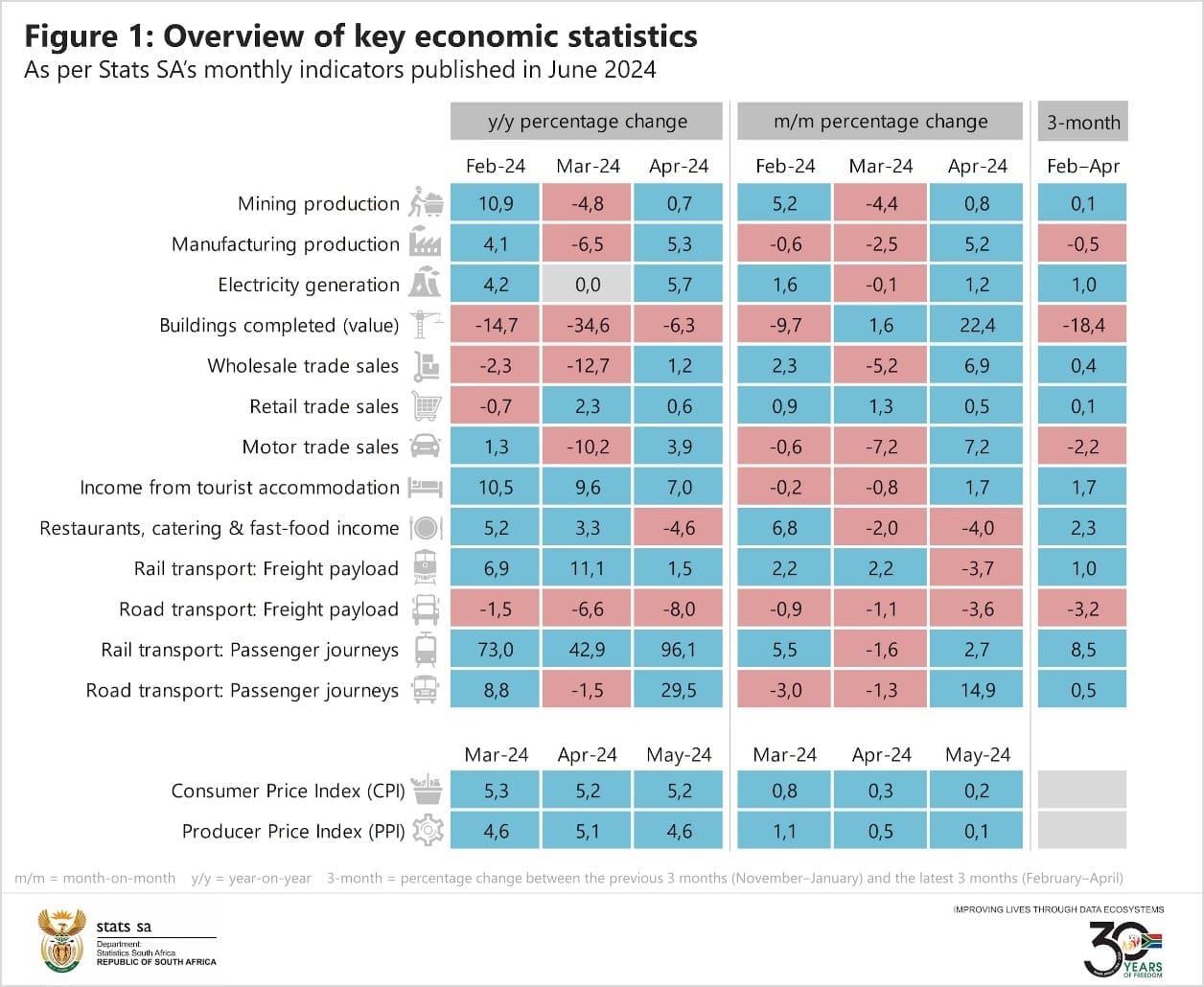- As Eskom celebrates 100 consecutive days without loadshedding, there are early signs of economic recovery in South Africa.
- This is according to Statistics South Africa, which tells of most industries posting positive growth for the beginning of the second quarter of the year.
- The first quarter already detailed a weakening of the economy, but a new government means cautious optimism for the future.
As the power utility of South Africa, Eskom, celebrates 100 days in a row without power cuts, a new report from Statistics South Africa shows that the renewed and consistent electricity is already proving beneficial for the economy.
Unfortunately, signs of an improving economy come only at the tail end of the report, which is mostly a wrap-up of how in totality, the economy of South Africa actually weakened in the first financial quarter of the year.
“The economy contracted by 0,1% in the first quarter of 2024, dragged lower by manufacturing, mining and construction. A weaker automotive sector was the main reason behind manufacturing’s poor showing, while mining was pulled lower by the platinum group metals, coal, gold and manganese ore,” the June economic summary reads.
“Other industries that performed poorly on the supply side of the economy include transport, storage & communication; electricity, gas & water; and general government services.”
Manufacturing, mining and construction are all industries that rely significantly on electricity. With loadshedding in effect, and especially in higher stages with longer outages, these industries must invest billions into alternative power sources, cutting into their production.
On the manufacturing front, loadshedding causes a number of serious issues not related to the increase costs that come with securing alternative power. These include disruption to the actual processes that lead to production, machinery not working, and increased maintenance and downtime.
Outages can severely impact the supply chain of businesses, leading to delays in deliveries of raw materials and components that can impact the entire ecosystem, all of which drag the entire economy down with it.
Manufacturing contributes 12.27 percent of the South Africa gross domestic product (GDP), meanwhile mining contributes to around four percent of the country’s GDP, while construction contributes around R100 billion every year. All of these were significantly reduced and constrained by loadshedding, estimated to sap billions of Rands from the South African economy every day.
No loadshedding, means this problem just suddenly disappears. As of April, Stats SA says that several sectors of the South African economy recorded positive year-on-year and month-on-month gains.
“These include mining, manufacturing, electricity generation, wholesale trade, retail trade, motor trade, tourist accommodation and passenger transport,” the agency says.

It is still early to call a change that will be sustained in the next few years, let alone in the next few months, but gains made by mining, manufacturing, construction, retail, electricity generation and more tell of signs of recovery, even if industries like restaurants and freight have contracted.
According to data from the Outlier, with a new executive cabinet and the ANC-led Government of National Unity, South Africans are “cautiously optimistic” about the future of the country after more than a decade of decline. That is, as long as loadshedding can be kept at bay.
[Image – CC 0 Pixabay]

